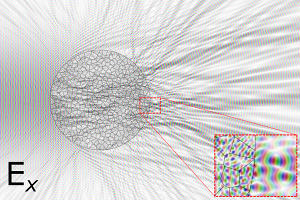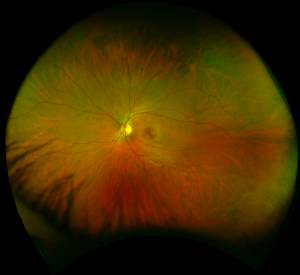Novel Hybrid Optics-Digital Imaging Systems
Conventional imaging systems have a limited depth-of-field and digital image-restoration techniques is not effective for such systems. When digital imaging systems are designed without the requirement of producing a sharp intermediate image, the optical-digital hybrid can be focal-distance agnostic.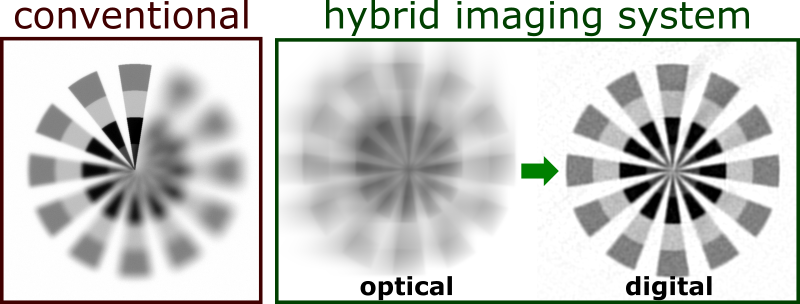
Spokes at different distances are cannot all be in focus in a conventional imaging system. The optical image of a hybrid imaging system shows all the spokes equally blurry; however, digital deconvolution enables a sharp image. Source:
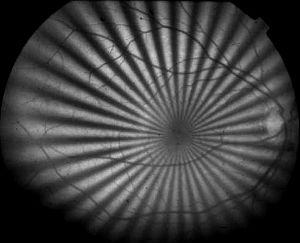
A spoke target projected on my retina. Image credit: Gonzalo D. Muyo and Alistair Gorman.
Computational Light-sheet Microscopy
Computational imaging methods have so far mostly focused on the detection optics, e.g. to extend the depth-of-field of the imaging system of a digital camera. Microscopy also gives us the ability to directly engineering the illumination optics.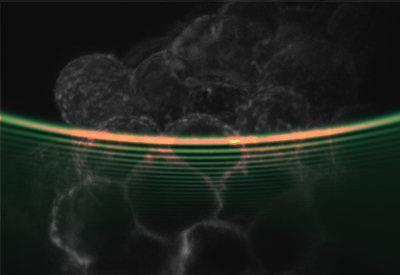 In a light-sheet microscope, a single plane of the sample is illuminated at one time. Limiting the illumination to a thin plane limits the sample exposure and improves the axial resolution; however, diffraction limits the field-of-view over which the light-sheet can remain thin. Instead, the light-sheet can be patterned in an Airy-function shape. Although the raw (3D) image would appear blurred, digital deconvolution can obtain diffraction-limited axial resolution over a ten-fold larger field-of-view.
In a light-sheet microscope, a single plane of the sample is illuminated at one time. Limiting the illumination to a thin plane limits the sample exposure and improves the axial resolution; however, diffraction limits the field-of-view over which the light-sheet can remain thin. Instead, the light-sheet can be patterned in an Airy-function shape. Although the raw (3D) image would appear blurred, digital deconvolution can obtain diffraction-limited axial resolution over a ten-fold larger field-of-view.
Complex Scattering of Light Waves
